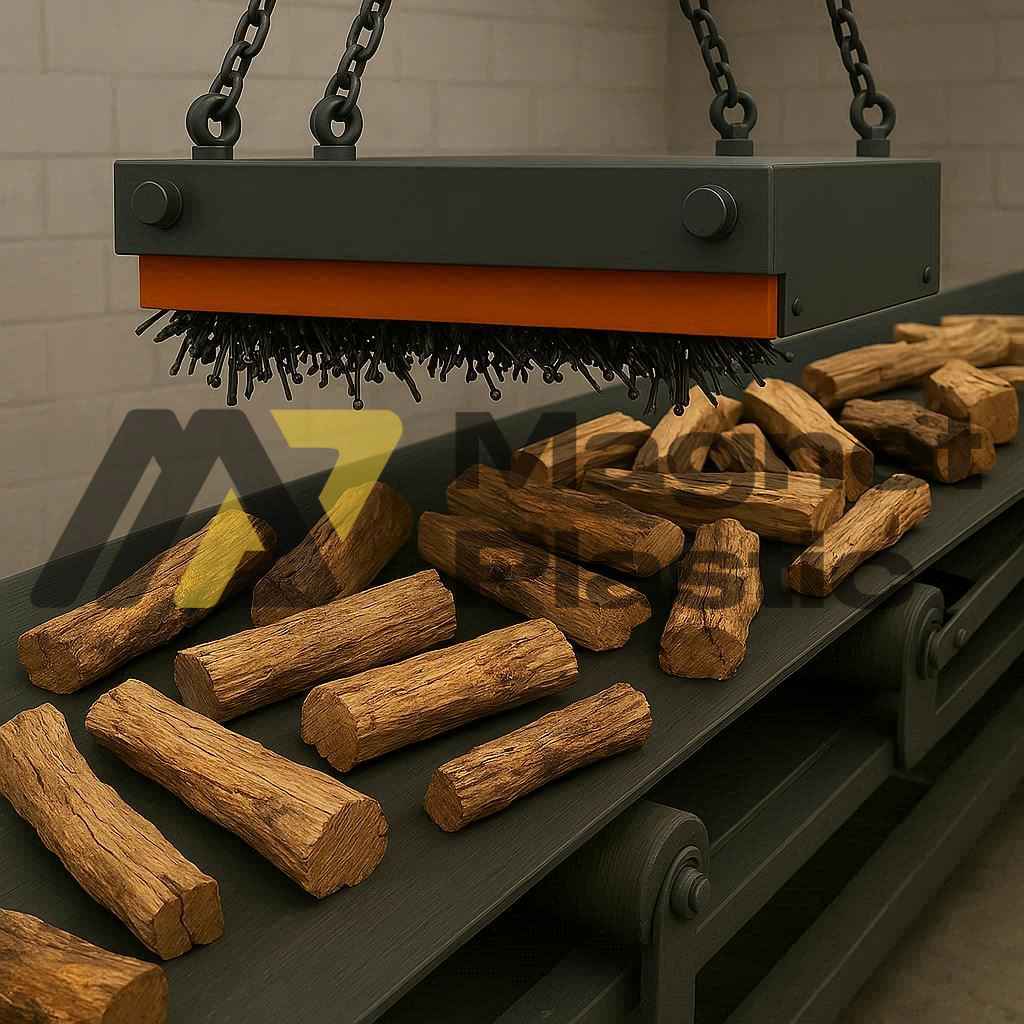Magnetic Separation in the Wood Industry
1. Wood: An Ancient and Versatile Material
Wood is one of the oldest and most versatile materials used by humans. From the first tools and constructions to modern industrial processes, its applications span sectors as diverse as construction, furniture manufacturing, energy production, and design. Today, the wood industry not only focuses on traditional wood processing but also on recycling and sustainable utilization.
2. A Key Sector for the Economy and Sustainability
The wood sector plays a fundamental role in the circular economy. Valorizing wood waste and transforming it into derivative products, such as particle boards, sawdust, or pellets, contributes to the full utilization of forest resources. In this context, magnetic separation systems are essential to ensure the quality of recovered material and prevent metal contamination that could compromise processing or the safety of the final product.
3. From Forest to Sawmill: The Transformation Process
The journey of wood begins with tree felling and pruning in the forest. The logs are then transported to the sawmill, where they are debarked, cut into smaller pieces, and dried to reduce moisture content. During secondary processing, the wood is sawn and planed into boards or processed into various forms for furniture, panels, or structural elements. At this stage, companies like Magnetplastic integrate magnetic separation systems that ensure material cleanliness and protect machinery.
4. Functions of Magnets in Sawmills
Magnets and magnetic separators perform three main functions within sawmills and processing plants:
- Metal Separation: They capture metallic elements such as nails, screws, or tool fragments that may be mixed with the wood.
- Machinery Protection: They prevent wear and damage to saws, crushers, and mills, extending equipment lifespan and reducing maintenance costs.
- Product Safety and Quality: They ensure processed wood is free from metal contaminants, a requirement for use in furniture manufacturing or construction.
5. Types of Magnetic Separators Used
Common systems include:
- Overband magnetic separators, installed over conveyor belts to remove ferrous metals;
- Permanent or electromagnetic plates, offering strong magnetic attraction;
- Neodymium magnetic bars, particularly useful for finer materials like chips or sawdust.
6. Stages of the Separation Process
The process occurs in several phases:
- Initial Cleaning: Overbands remove large metal particles from the material flow.
- Metal Attraction: Magnetic plates suspended above conveyors capture nails and iron fragments.
- Final Separation: Magnetic drums or rollers fully separate the clean wood.
- Maintenance and Cleaning: Systems are cleaned manually or automatically to ensure continuous efficiency.
7. Conclusion
Incorporating magnetic separation systems in the wood industry is essential for producing safe, homogeneous, and sustainable products. Beyond protecting machinery and ensuring material quality, these systems contribute to energy efficiency and sector sustainability. In specialized companies like Magnetplastic, designing and manufacturing magnetic separators tailored to each material type helps optimize processes and guarantee excellent results across the entire production chain.
